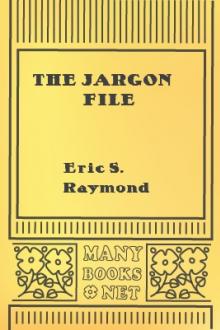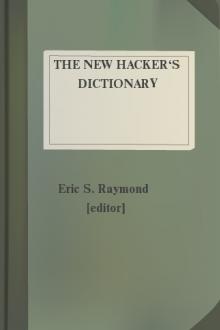author - "Eric S. Raymond"

ele-1983, but external conditions caused the `temporary' freeze to become permanent.
The AI Lab culture had been hit hard in the late 1970s by funding cuts and the resulting administrative decision to use vendor-supported hardware and software instead of homebrew whenever possible. At MIT, most AI work had turned to dedicated LISP Machines. At the same time, the commercialization of AI technology lured some of the AI Lab's best and brightest away to startups along the Route 128 strip in Massachusetts and out West in Silicon Valley. The startups built LISP machines for MIT; the central MIT-AI computer became a [45]TWENEX system rather than a host for the AI hackers' beloved [46]ITS.
The Stanford AI Lab had effectively ceased to exist by 1980, although the SAIL computer continued as a Computer Science Department resource until 1991. Stanford became a major [47]TWENEX site, at one point operating more than a dozen TOPS-20 systems; but by the mid-1980s most of the interesting software work was being

neral commitment to a cathedral-building style of development. If the overriding objective was for users to see as few bugs as possible, why then you'd only release a version every six months (or less often), and work like a dog on debugging between releases. The Emacs C core was developed this way. The Lisp library, in effect, was not-because there were active Lisp archives outside the FSF's control, where you could go to find new and development code versions independently of Emacs's release cycle [QR].
The most important of these, the Ohio State Emacs Lisp archive, anticipated the spirit and many of the features of today's big Linux archives. But few of us really thought very hard about what we were doing, or about what the very existence of that archive suggested about problems in the FSF's cathedral-building development model. I made one serious attempt around 1992 to get a lot of the Ohio code formally merged into the official Emacs Lisp library. I ran into political trouble and was largely unsucces

effectively stopped growing and changing. Originally, this was due to a desire to freeze the file temporarily to facilitate the production of Steele-1983, but external conditions caused the `temporary' freeze to become permanent.
The AI Lab culture had been hit hard in the late 1970s by funding cuts and the resulting administrative decision to use vendor-supported hardware and software instead of homebrew whenever possible. At MIT, most AI work had turned to dedicated LISP Machines. At the same time, the commercialization of AI technology lured some of the AI Lab's best and brightest away to startups along the Route 128 strip in Massachusetts and out West in Silicon Valley. The startups built LISP machines for MIT; the central MIT-AI computer became a [45]TWENEX system rather than a host for the AI hackers' beloved [46]ITS.
The Stanford AI Lab had effectively ceased to exist by 1980, although the SAIL computer continued as a Computer Science Department resource until 1991. Stanford became a majo

ele-1983, but external conditions caused the `temporary' freeze to become permanent.
The AI Lab culture had been hit hard in the late 1970s by funding cuts and the resulting administrative decision to use vendor-supported hardware and software instead of homebrew whenever possible. At MIT, most AI work had turned to dedicated LISP Machines. At the same time, the commercialization of AI technology lured some of the AI Lab's best and brightest away to startups along the Route 128 strip in Massachusetts and out West in Silicon Valley. The startups built LISP machines for MIT; the central MIT-AI computer became a [45]TWENEX system rather than a host for the AI hackers' beloved [46]ITS.
The Stanford AI Lab had effectively ceased to exist by 1980, although the SAIL computer continued as a Computer Science Department resource until 1991. Stanford became a major [47]TWENEX site, at one point operating more than a dozen TOPS-20 systems; but by the mid-1980s most of the interesting software work was being

neral commitment to a cathedral-building style of development. If the overriding objective was for users to see as few bugs as possible, why then you'd only release a version every six months (or less often), and work like a dog on debugging between releases. The Emacs C core was developed this way. The Lisp library, in effect, was not-because there were active Lisp archives outside the FSF's control, where you could go to find new and development code versions independently of Emacs's release cycle [QR].
The most important of these, the Ohio State Emacs Lisp archive, anticipated the spirit and many of the features of today's big Linux archives. But few of us really thought very hard about what we were doing, or about what the very existence of that archive suggested about problems in the FSF's cathedral-building development model. I made one serious attempt around 1992 to get a lot of the Ohio code formally merged into the official Emacs Lisp library. I ran into political trouble and was largely unsucces

effectively stopped growing and changing. Originally, this was due to a desire to freeze the file temporarily to facilitate the production of Steele-1983, but external conditions caused the `temporary' freeze to become permanent.
The AI Lab culture had been hit hard in the late 1970s by funding cuts and the resulting administrative decision to use vendor-supported hardware and software instead of homebrew whenever possible. At MIT, most AI work had turned to dedicated LISP Machines. At the same time, the commercialization of AI technology lured some of the AI Lab's best and brightest away to startups along the Route 128 strip in Massachusetts and out West in Silicon Valley. The startups built LISP machines for MIT; the central MIT-AI computer became a [45]TWENEX system rather than a host for the AI hackers' beloved [46]ITS.
The Stanford AI Lab had effectively ceased to exist by 1980, although the SAIL computer continued as a Computer Science Department resource until 1991. Stanford became a majo